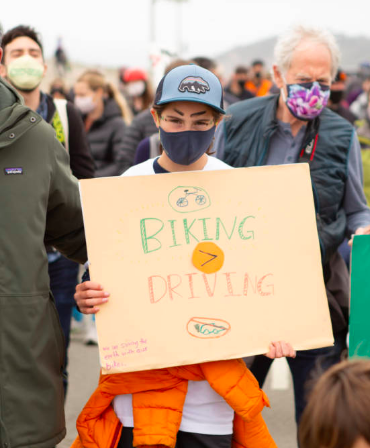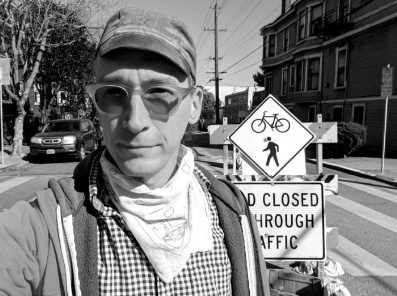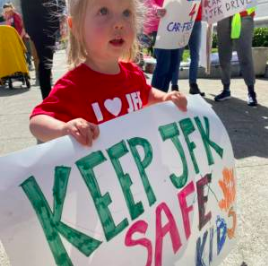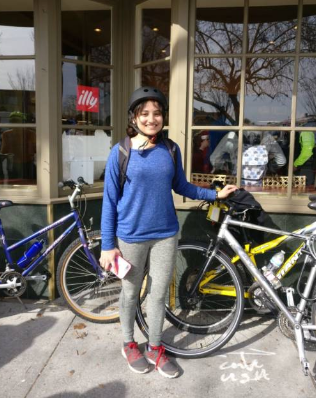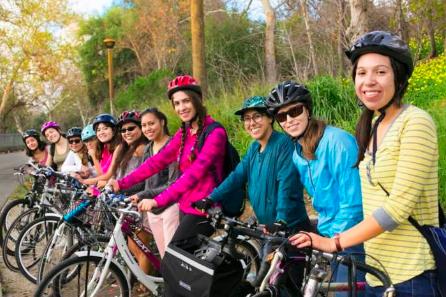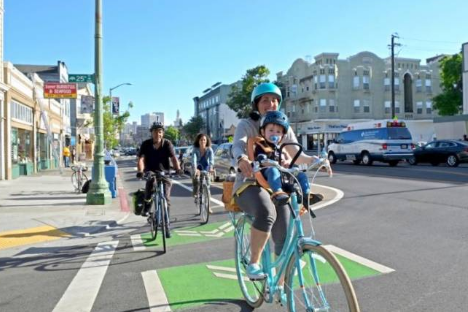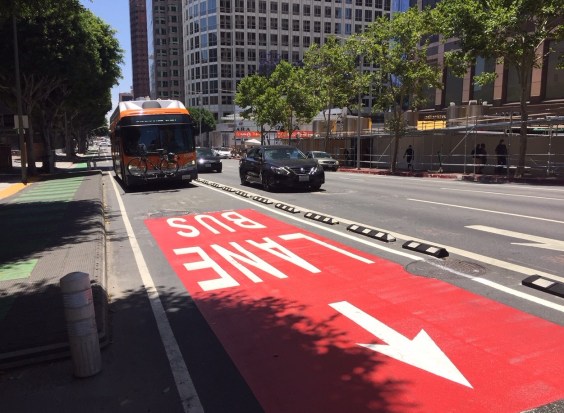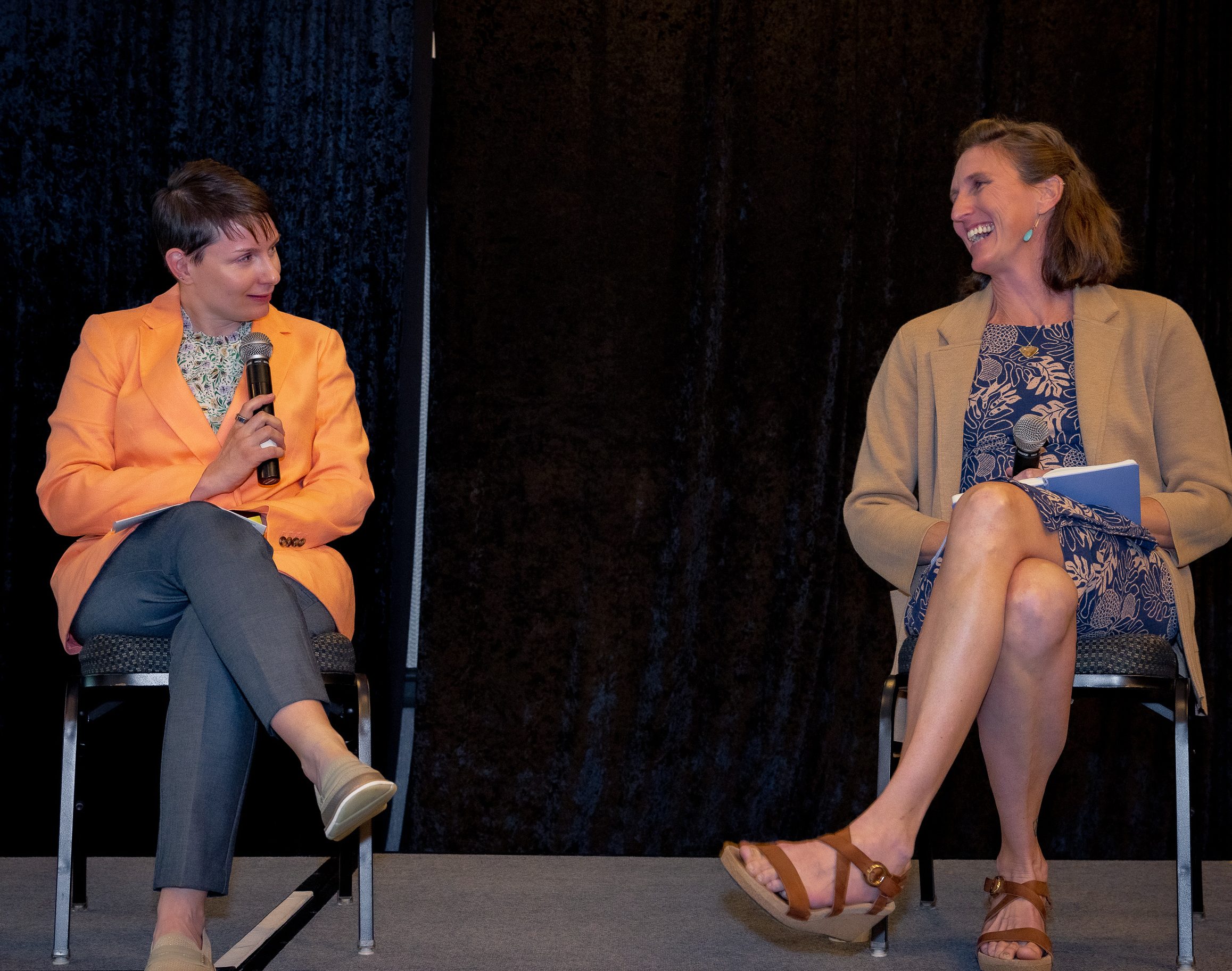There is no single way to advocate for more bikeable communities, and bike advocacy has evolved over the years. Recently, we noticed a set of new advocates jumping in to push for things like closing JFK Drive in San Francisco’s Golden Gate Park and closing streets in Los Angeles’s Griffith Park. So CalBike decided to talk to some of them about what motivated them to step up, how their approaches are different from some of the more established bike coalitions, and how newer and more seasoned advocates work together. We also spoke to advocates from more established bike coalitions about their expanding approaches to advocacy, which center on equity and often take a community-focused approach to safer streets.
This article is in no way meant to be a comprehensive survey of all the innovative approaches that bike advocates are taking around California. Consider this a small sampling of the diverse tapestry of bicycle-powered change throughout our state.
Reinventing the wheel: Groups springing up to fill gaps in bike advocacy is not new
The seed for this research was a new generation of activists springing up to create advocacy organizations. But the phenomenon of the next generation forging its own path is not new.
In fact, CalBike’s outgoing executive director, Dave Snyder, was part of a renegade movement in the early 1990s as a co-founder of the Thunderhead Alliance, which later became the Alliance for Biking and Walking.
At the time, Snyder was executive director of the nascent San Francisco Bicycle Coalition. “We were dissatisfied with the national organization’s ability to organize the local groups that were sprouting up all over the country,” he says.
He recalls the impact of getting together with leaders from several dozen other local and state bicycle coalitions around the U.S. for a retreat in Wyoming (the group was named after the Thunderhead Ranch, where the retreat took place). Most were ragtag operations with tiny budgets and just a couple of paid staff, if that.
“It was one of the most powerful long weekends of my life,” Snyder says. “Most of them hadn’t met each other before, and it was powerful to be surrounded by other people doing the same kind of work. It was mind-boggling. It was inspiring.”
While the Alliance ceased to exist in 2016 (handing over its archives to the League of American Bicyclists), it served an important purpose of solidifying the movement for better biking in cities around the country, giving local advocates a forum for sharing information and resources.
Using data to create an evidence-based argument for street safety
Stephen Braitsch started Transpo Maps with Marcel Moran in 2019 because, he says, “The traditional organizations are not getting the job done.”
Moran is a researcher and student at UC Berkeley, and Braitsch is an engineer and graphic designer. Combining their skills, they create maps to visualize data such as the distribution of car ownership in San Francisco, which shows the percentage of San Franciscans who are car-free in each census tract.
“The person who’s loudest in the room wins [in public policy debates], and that’s not fair. When you bring data into the equation, it helps lift up the quieter voices,” Braitsch says. “We see our work as another arrow in the quiver.”
His focus is on data and direct action. “We’re not going to get where we need to go by waving signs at city hall or signing petitions,” he says. One example is the “Just a Minute” protest that stopped vehicular traffic every time a car pulled into a bike lane on Valencia Street. Braitsch’s video of the action has over 100,000 views on Twitter.
LAST NIGHT we created a temporary safe path on Valencia St for ppl biking & scooting while motorists idled in the bike lane.
— Stephen Braitsch @braitsch@sfba.social (@braitsch) February 24, 2022
It is a disgrace that 1 of SF's premiere retail corridors & a major N/S bike artery continues to be a dangerous car sewer. This must change. #justaminute pic.twitter.com/9rimMaUSDo
One of Moran and Braitsch’s newest projects is to put faces on the San Franciscans killed by car violence. It’s a massive undertaking for a group that relies on volunteer time and donations. But Braitsch feels strongly that politicians should be required to publicly address traffic violence and sees the fatalities map as a path to more public discussion of this issue.
“The biggest issue is political accountability,” Braitsch says, “and I wish more people who care about safe streets saw it that way.”
A child-centered approach to Slow Streets
Robin Pam is a volunteer organizer with Kid Safe SF and was one of the group’s founding members. In March 2021, “when it became clear there was going to be an organized effort to put cars back” on San Francisco’s pandemic Slow Streets, Pam says, “We gathered friends and people we had known in the advocacy community” to advocate for more kid-friendly spaces on San Francisco streets.
Slow streets allowed kids to run around without holding someone’s hand. “That didn’t exist in San Francisco before the pandemic,” Pam says. “A lot of us felt like this was the best thing that San Francisco had done for families since we moved to the city.”
So Kid Safe SF joined with groups like the San Francisco Bicycle Coalition and Walk SF, bringing new voices to win the permanent opening of JFK Drive in San Francisco’s Golden Gate Park for people walking, biking, strolling, and skating.
Kid Safe SF was an underdog: an all-volunteer group with many members who were new to safe streets advocacy up against experienced political operatives with deep pockets (the museums in the park). “When we started a year ago, I don’t think any of us expected we would win that fight,” Pam says.
After the JFK Drive win, Kid Safe SF has new goals. Pam says they want to make the Great Walkway (formerly the Great Highway along Ocean Beach) permanent and protect and expand the Slow Streets program into more neighborhoods. “Our goal is that every kid in the city should have a safe way to walk or bike to school, to the playground, to the library,” she says.
Now that the Kid Safe SF organizers are seasoned by their first big campaign with more knowledge of how SF politics works, they are ready to push for more. “Because it really is just a few special interests that are standing in the way of having truly safe streets,” Pam says.
It’s not just about bikes
Another new advocacy group (founded in 2019) that was formed to bridge a gap in active transportation advocacy is Streets for All. “Streets for All is LA’s first and only political action committee around transportation. We can endorse candidates, we can support candidates, and we can tell people who to vote for if they care about these issues,” says Michael Schneider, one of the group’s founders. The group was instrumental in working with Senator Portantino to craft S.B. 932, the Plan for the Future Bill, which CalBike is cosponsoring, and the group is supporting a total of 19 bills in the 2022 legislative session. And it helped push an initiative that would require Los Angeles to move beyond planning and implement Complete Streets improvements, which is headed for the ballot.
“I’m born and raised in LA and, like most people who grow up here, it was embedded in my DNA that you need a car to get around,” Schneider says. He used to be the kind of person who would drive three blocks to the store and complain that there wasn’t enough parking.
But, nine years ago, he got rid of his car and challenged himself to get around by bike for a week. “By day two or three, I realized I was having fun,” he recalls. “It almost felt illegal: I’m an adult, I shouldn’t be having fun getting around.” He adds, “I felt like I had hacked my city. I was never in traffic, and I never had to look for parking.”
Getting around differently changed Schneider’s relationship with his city, and that led him to educate himself about the process of making changes. He discovered that the 15 Los Angeles city council members have absolute control over the streets in their districts. “I realized if I wanted to change the streets, I needed to change the city council,” he says. He helped found Streets for All to bring political change because the other local bike organizations were all 501(c)3 nonprofits that aren’t allowed to do electioneering.
Bubba Fish, a legislative advocate with the all-volunteer Streets for All and a member of Bike Culver City (which works under the umbrella of the Los Angeles County Bicycle Coalition, LACBC), turned to active transportation after a traumatic crash.
“I was in a really terrible car accident in 2014. If anyone had been in the back seat, they would have died,” Fish says. “That sealed the deal. I sold my car.” He started looking for other ways to get around but was distressed by how dangerous L.A. streets were for people biking and walking. After Governor Gavin Newsom vetoed the Complete Streets Bill, he says, “I was angry and wanted to organize. I yelled into the void, and Streets for All found me.”
While bike advocacy often skews older, “most of the people I’m working with at Streets for All are in their late twenties to early thirties,” Fish says. He speculates that “we might attract a younger crowd because we are broader in focus,” with a mission to create safer streets for all users, no matter what transportation mode they choose. “I think younger folks want a broader umbrella because they want to address some of the adjacent issues,” he says, including racial justice and mobility for people with disabilities.
Fish feels that there’s a stigma on bicycle advocacy because a lot of people in L.A. will never feel comfortable getting around by bike. “We’re trying to make the umbrella a little bigger so we’re not seen as the bike people all the time,” he says.
Schneider agrees. “When you say the word bike in your name, you’re essentially alienating people,” he says. “The reason I got started with advocacy is because I really care about biking,” but he soon saw that the changes he sought were intersectional.
Established bicycle coalitions embrace new models of advocacy
New active transportation advocacy groups vs. traditional bicycle coalitions isn’t the right frame for looking for new models of bicycle advocacy. In fact, there may be no such thing as a “traditional” bicycle coalition.
California’s bike advocacy groups continue to evolve, grow, and find better ways to serve their communities, including partnering with other active transportation and community groups. We spoke with advocates from three bike coalitions about the methods, new and old, that they use to push for safer streets and build community.
A hub and spoke model of bicycle advocacy
The Silicon Valley Bicycle Coalition covers 35 cities and towns across two counties. In 2019, says Sandhya Laddha, SVBC advocacy and policy director, “We changed our work plan for how advocacy should be at SVBC from a top-down approach. We will focus all our energy on empowering members so that they can work on campaigns and initiatives.”
With an advocacy team of three, SVBC couldn’t be as effective without its local teams (nine so far and counting). “We wanted to be involved everywhere, but we couldn’t do it with just three people,” Laddha says.
SVBC is not the only countywide bicycle coalition to foster local subgroups. Coalitions, including Bike East Bay and LACBC, have city-specific groups under their umbrella. Laddha and some SVBC local team leaders presented the local teams model at the California Bicycle Summit in April, which has inspired more bike coalitions to initiate a similar approach.
“We’re able to be more proactive than reactive” with the new model, Laddha says. Before changing its advocacy model, SVBC ran about three to five campaigns at a time. Now, each team has three to five campaigns, vastly increasing the organizing power of the group.
Community first: Building relationships and budding advocates
Santa Ana Active Streets operates on a different model from most bicycle advocacy groups. Its approach to advocacy is intensely intersectional and community-focused.
“A Santa Ana resident has a lot of concerns,” says Kris Fortin, SAAS project director. People are contending with issues including housing insecurity, environmental injustice, as well as mobility injustice.
The group doesn’t just work on bike lanes because “there’s a lot of different reasons why people move the way they do,” he says. That has led SAAS to host bike rides featuring topics of local interest, such as a toxic tour or a cooking demonstration with ingredients sourced from local gardens.
While SAAS started as a coalition, it has grown into a horizontal model that supports individuals and their ideas. “We have really worked hard to emphasize the individual bicyclist, the individual pedestrian,” Fortin says. “How we handle things is in a very slow way.” The group’s campaigns seek to empower bike riders and pedestrians but also to let them know that they are seen and encourage them to take up space and understand that they have a right to be on the streets too.
Maria Ceja, a volunteer with the SAAS advocate subcommittee and an advocate for Tenants United Santa Ana, notes that Santa Ana has the highest poverty rate in Orange County. “I really admire the recognition of that intersectional class struggle,” she says of Santa Ana Active Streets. “They don’t expect the community to come to them – they go to the community.”
Irene Cabañas, president of the Willard Neighborhood Association as well as a SAAS volunteer, has fostered collaboration between both groups to write grants and bring programs to her neighborhood. “One thing that SAAS does that’s innovative is really put the volunteer first,” she says. “That full 360 volunteer experience I think is what makes SAAS strong and different from other groups that I’ve seen.”
You might call the SAAS model “slow advocacy.” “I like to think how we try to do it is knowing our limitations but also challenging ourselves to not rush the nature of partnership building or relationship building,” Fortin says. SAAS seeks partnerships with other community organizations to bridge language barriers and build solidarity.
Bringing neighborhoods together: Established and startup activist groups work together
Dave Campbell knows firsthand that seasoned bicycle advocates can be jaded and battle-scarred after losing many fights. The Bike East Bay advocacy director started as a volunteer with the group in 1996 and joined the staff in 2011. He notes that new groups that don’t have those experiences might push harder for things that don’t seem possible to advocates who have been around longer.
He cites the example of getting student bus passes paid for through Measure BB, an Alameda County transportation sales tax, saying, “That took someone not taking no for an answer.”
For Bike East Bay, transportation justice and neighborhood support are two critical elements of any project. “We don’t try to outnumber the businesses with supportive people who walk and bike,” Campbell says. Instead, the group works with businesses to build a base of support. That might take longer, but it leads to projects that have broad consensus and are less likely to be undermined by angry stakeholders.
“You have to redesign the whole street, and it’s not just about adding a bike lane. We have to be transit advocates. We have to be pedestrian advocates,” Campbell says. “I don’t ever want to see another bike plan. I just want to see complete streets multimodal plans.”
Campbell sees partnerships between seasoned advocates and newer advocacy groups as fruitful. Bike East Bay has the experience and connections, and the new groups bring fresh energy and a sense of expanded possibilities. A recent example is a plan to transform several blocks of Telegraph Avenue just south of the UC Berkeley Campus into a pedestrian zone, which Bike East Bay is working on. When UC students formed Telegraph for People and got involved halfway through the project, they advocated for adding several car-free blocks to the project and that’s now being studied.
Many hands make lighter work for safe streets advocates
One theme that ran through conversations with all the advocates is partnerships. Brand new advocacy groups and established coalitions bring different strengths and, by working together, increase the chances of securing safe streets. People with a broad range of interests are joining the fight for safer streets, and that gives bike and pedestrian advocates more routes to victory.
There are many more diverse, creative, and innovative approaches to active transportation advocacy across California. If we left out a group or a project that you’re excited about or impressed with, please share that story with CalBike on Twitter or Facebook.
Streetsblog California editor Melanie Curry has been thinking about transportation, and how to improve conditions for bicyclists, ever since commuting to school by bike long before bike lanes were a thing. She was Managing Editor at the East Bay Express, editor of Access Magazine for the University of California Transportation Center, and earned her Masters in City Planning from UC Berkeley.
Read More:
Stay in touch
Sign up for our free newsletter
More from Streetsblog California
Wednesday’s Headlines
Brightline LA-to-Vegas promises quick construction; LA Metro buses set to test camera enforcement of bus lane obstruction; Why are we still knocking down houses to build freeways? More
Brightline West Breaks Ground on Vegas to SoCal High-Speed Rail
Brightline West will be a 218-mile 186-mile-per-hour rail line from Vegas to Rancho Cucamonga - about 40 miles east of downtown L.A. - expected to open in 2028
CalBike Summit to Advocates: Don’t Take No for an Answer
"Persistence with kindness." "Keep trying different things." "You have to be kind of annoying." "Light up their phones."
Why We Can’t End Violence on Transit With More Police
Are more cops the answer to violence against transit workers, or is it only driving societal tensions that make attacks more frequent?
Eyes on the Street: Santa Monica Connection from E Line Bike Path to Downtown Is Almost Complete
“Always be closing gaps in your bikeway network.”
